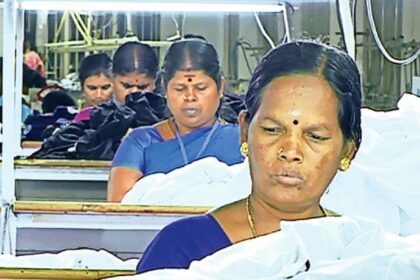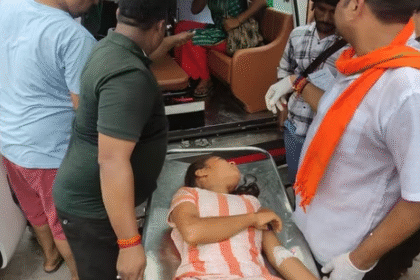Assembly Bypoll Results 2025: Key Wins and Shifts in Nilambur, Ludhiana, Kaliganj, Visavadar & Kadi
The Real Referendum Happens in Bypolls
While general elections often capture national headlines, it is in assembly bypolls that the true health of Indian democracy is often revealed. The 2025 by-elections in Nilambur (Kerala), Ludhiana (Punjab), Kaliganj (West Bengal), Visavadar (Gujarat), and Kadi (Gujarat) served as a barometer for the shifting loyalties, emerging local narratives, and the evolving fault lines in India’s political landscape.
These five seats, while scattered across different states, represent a microcosm of India’s diverse electorate—ranging from rural bastions of traditional politics to urban constituencies shaped by caste realignments, development narratives, and post-pandemic socioeconomic realities.
This article, divided into multiple parts, aims to analyze the results, party performances, local dynamics, voter turnout, leadership strategies, and the national implications of these bypolls.
Why Bypolls Matter More Than We Think
Bypolls are often seen as routine affairs—mere blips between major elections. But seasoned political analysts understand that:
- Bypolls serve as midterm report cards for ruling governments.
- They test alliance cohesion, particularly in states with multi-party coalitions.
- They expose the resilience of opposition movements, especially after electoral defeats.
- They offer early signs of anti-incumbency or policy backlash.
In 2025, these bypolls took on added weight. With the next general election just two years away, every seat, every swing, and every drop in voter turnout was scrutinized for national meaning.
Nilambur (Kerala) – A Left Stronghold Shaken
Constituency Overview
Nilambur in Kerala has long been a bastion of the Left Democratic Front (LDF), particularly the CPI(M). With a high literacy rate, strong public sector employment, and political consciousness shaped by workers’ movements, Nilambur has traditionally leaned red.
The Result
In a surprise outcome, the Indian Union Muslim League (IUML), a key partner of the UDF, snatched the seat from the CPI(M) with a margin of over 7,000 votes.
Analysis
- The IUML’s focus on minority consolidation, combined with the UDF’s renewed grassroots presence, played a pivotal role.
- The CPI(M)’s weakening appeal among young first-time voters and its perceived bureaucratic complacency hurt its prospects.
- A low-profile campaign by the LDF, coupled with mobilization by religious community networks, proved decisive.
Implication
This seat, while just one, has symbolic weight. It signals that Kerala’s Left cannot take Muslim-majority constituencies for granted, especially in regions where economic stagnation and identity politics intersect.
Ludhiana East (Punjab) – AAP’s Test of Endurance
Constituency Overview
Urban, industrial, and historically Congress-leaning, Ludhiana East was seen as a challenge for the Aam Aadmi Party (AAP), which stormed to power in Punjab in 2022 on an anti-corruption and education reform wave.
The Result
The Congress candidate reclaimed the seat, defeating AAP by over 12,000 votes—marking one of AAP’s most significant urban losses since its rise in Punjab.
Analysis
- AAP’s governance fatigue is setting in faster than expected, with local complaints about unemployment, drug menace, and law enforcement inefficiency rising.
- The Congress successfully leveraged Dalit and industrial worker dissatisfaction, combining identity-based outreach with promises of local governance reforms.
- Voter turnout dropped by 6%, signaling urban apathy and disillusionment with AAP’s performance in urban Punjab.
Implication
This loss hurts AAP in more ways than numbers suggest. It shows that urban trust, once broken, is hard to regain, and that the Congress is rebuilding its Punjab base—seat by seat.
Kaliganj (West Bengal) – TMC vs. BJP in Round 47
Constituency Overview
Kaliganj, a border constituency in West Bengal’s Nadia district, has seen constant contestation between Trinamool Congress (TMC) and the BJP post-2019. With a large Matua population, frequent migration issues, and a history of agrarian distress, Kaliganj is politically volatile.
The Result
The TMC retained the seat, but with a significantly reduced margin compared to the 2021 assembly results.
Analysis
- BJP made inroads, particularly among the Matuas and youth frustrated with state-level corruption cases (like the SSC scam).
- The TMC’s welfare schemes (like Lakshmir Bhandar) still hold ground, especially among women.
- Polarization narratives failed to deliver a win for BJP, but it narrowed the gap enough to signal long-term threat.
Implication
Kaliganj is a warning bell for TMC: 2026 may not be a cakewalk. For the BJP, it’s proof that with local leadership grooming and issue-based campaigning, Bengal can still be contested.
Visavadar (Gujarat) – The Ghost of Keshubhai Patel
Constituency Overview
A stronghold of the Patidar community, Visavadar in Junagadh has been the political backyard of late CM Keshubhai Patel. Once swayed by regional outfits like GPP, the seat is now central to the BJP-Congress tug of war in rural Gujarat.
The Result
The Congress stunned the BJP, reclaiming the seat after over a decade—thanks largely to Patidar discontent and agriculture-related anxieties.
Analysis
- The BJP’s pro-business policies and water pricing reforms alienated small farmers.
- The Congress successfully revived its cooperative-sector nostalgia pitch.
- Youth unemployment and school closures post-pandemic swayed votes away from the incumbent.
Implication
A rural seat flipping in Gujarat—even in a bypoll—signals grassroots level vulnerabilities for the BJP ahead of 2027. This result is more than symbolic—it’s diagnostic.
Kadi (Gujarat) – BJP Holds, But With Bruises
Constituency Overview
Kadi is a semi-urban, OBC-dominated constituency in Mehsana district. It’s been a safe seat for BJP due to its industrial growth and saffron organizational depth.
The Result
The BJP retained the seat, but its victory margin was slashed by over 50% from 2022.
Analysis
- Rising inflation and price of basic goods became major issues.
- The Congress, despite being organizationally weaker, ran a sharp local campaign focused on labor issues and health infrastructure.
- Discontent among factory workers—especially migrant labor—was higher than previously estimated.
Implication
While not a loss, this is a strategic jolt to the BJP. The lesson: over-centralization in ticket distribution and lack of localized welfare can dent even safe seats.
The Story So Far
The Assembly Bypoll Results 2025 tell a story of fluid politics, changing loyalties, and rising anti-incumbency, even in supposedly safe bastions. The voter is informed, impatient, and issue-driven.
From Kerala’s Muslim-majority pockets to Gujarat’s restless farmers, India is sending signals—not just to state capitals, but to Delhi itself.
The bypolls may have filled just five seats, but they’ve opened five different conversations—on coalition durability, caste dynamics, youth discontent, and the real state of Indian governance beyond the headlines.
Elections are not only about candidates and parties. They are about identities, grievances, aspirations, and symbols. In India, this becomes even more pronounced in by-elections, where localized dynamics, caste arithmetic, community mobilization, and internal factionalism often outweigh national narratives.
In this part, we dig beneath the vote counts to examine the sociopolitical machinery that moved the needle in these five constituencies.
Caste Realignments – The Axis of Aspiration
🟡 Nilambur – Minority Consolidation and Backward Class Gaps
In Nilambur, the IUML’s victory wasn’t simply about Muslim vote consolidation—it was also about internal fissures within the Left’s OBC vote bank.
- The Ezhava community, once stalwart supporters of the CPI(M), showed signs of disengagement.
- Muslim youth, disenchanted with what they saw as a bureaucratized, aging Left, leaned toward IUML’s grassroots promise.
This signaled a post-ideological era in Kerala’s backward caste politics—where delivery trumps dogma.
🔴 Ludhiana – Dalit Assertion Meets Urban Neglect
Punjab’s largest Dalit population exists in Ludhiana and Doaba. AAP’s promises of change didn’t match the ground realities of urban labor exploitation, informal sector collapse, and rising drug addiction.
- The Valmiki and Mazhabi Sikh communities, traditionally volatile in voting patterns, returned to Congress, not out of love—but lack of better alternatives.
- The lack of Ambedkarite representation in AAP’s candidate selection deepened this alienation.
🟠 Visavadar – Patidar Pushback
The Patidar community, particularly Leuva Patels, turned against the BJP due to:
- Perceived neglect of smallholding farmers.
- Dissatisfaction with quota politics.
- Anger over urban real estate inflation that pushed them out of housing markets.
The Congress strategically tapped into this disaffection, offering local candidates with cooperative movement roots, stirring nostalgia and trust.
Coalition Management – Unity or Uneasy Truce?
🔵 UDF in Kerala – A Rare Moment of Alignment
The victory in Nilambur marks a successful synchronization of IUML and Congress cadres—something missing in previous cycles. The leadership wisely avoided infighting, allowing IUML to contest without friction, signaling increased cohesion within UDF.
🔵 Congress in Punjab – Reorganizing Under the Radar
Post the 2022 rout, many assumed Punjab Congress was finished. But in Ludhiana, it ran targeted booth-level campaigns, tapped into industrial union networks, and deployed local youth influencers. More importantly, it stayed unified behind a single candidate, preventing factional sabotage.
🔵 TMC in Bengal – Comfortable but Complacent?
Though TMC won Kaliganj, its vote share dipped, and local panchayat leaders voiced dissent over MLA choices. Internal coalition cracks between the Matua Mahasangha and core TMC loyalists may not have exploded—but they were felt.
🔵 BJP in Gujarat – Cracks Beneath the Chrome
The BJP’s Gujarat model seems shiny from Delhi. But at the local level:
- Caste grievances (like among Thakors in Kadi)
- Rural economic stagnation
- And over-centralized candidate selection
…have brewed unrest among its rank and file. While they held Kadi, the Visavadar loss hints at deeper coalition fatigue.
The Campaigns – From Megaphones to Micro-Influence
📱 Tech-Driven Voter Outreach in Ludhiana
Congress adapted in unexpected ways. Instead of traditional rallies, they:
- Used local WhatsApp groups for voter contact.
- Created vernacular memes on poor policing and drug crises.
- Hired micro-influencers in local Instagram circles to run #BringBackChange narratives.
AAP stuck to its 2022 script—and was outpaced on digital terrain it once dominated.
📻 Rural Radio and Women-Centric Outreach in Kaliganj
TMC’s women-run SHG (Self Help Group) networks did the heavy lifting in Kaliganj. Welfare schemes like Lakshmir Bhandar were translated into daily audio messages on community radios, where local women explained how to access entitlements.
That direct communication bypassed the polarizing TV wars and kept women voters loyal, despite male swing toward BJP.
🎤 Caste Sabha Meetings in Gujarat
Congress revived a tactic long ignored: public dialogues in caste sabhas—inviting local elders to debate youth issues, quotas, education access. In Visavadar, this helped rebuild trust among Patidar voters, who felt unheard by BJP’s one-size-fits-all governance.
The Role of the Election Commission & Neutral Machinery
A notable improvement across all five seats was the efficiency of the EC and local election officers:
- Quick vote counting
- Transparent candidate affidavits
- Disbursement of voter slips through community workers
…all contributed to a smoother and more trusted process.
However, opposition parties flagged concerns in Kaliganj, citing misuse of state machinery, and alleged intimidation of minority voters. These are under review.
The Voter Mood – Tired of Tall Claims
A deeper read across all five seats shows a common voter sentiment emerging:
People weren’t voting for revolutionary change—they were voting for stability, jobs, local access, and dignity.
Even swing voters—youth, small business owners, teachers—made their decisions based less on ideology and more on:
- Corruption-free access to benefits
- Local issue resolution
- Caste/community representation in MLA offices
This trend cuts across states and may well define how parties must campaign in 2026 and 2029.
Beneath the Numbers, A Nation in Transition
The 2025 bypolls were not won by charisma or slogans. They were won (or lost) by:
- Local caste understanding
- Smart coalition management
- Modern campaign methods
- Ability to speak to voter fatigue
These results prove that the Indian electorate is evolving—not toward apathy, but toward pragmatism. The big parties that fail to grasp this—whether Congress, BJP, AAP, or regional giants—do so at their own peril.
The next round of battles may not be over votes alone, but over trust, empathy, and tangible delivery.
Also Read : 7 Devastating Truths Behind the Muslim World’s Collapse – From Syria to Iraq to Gaza








